Advance Care Planning Discussions: Why They Should Happen, Why They Don’t, and How We Can Facilitate the Process
If we can successfully initiate advance care planning discussions with our patients and families, their end-of-life processes will improve, resulting in better care, less use of the hospital, and more honoring of newly discerned choices.
Table 1: “What We Have Is a Failure to Communicate”
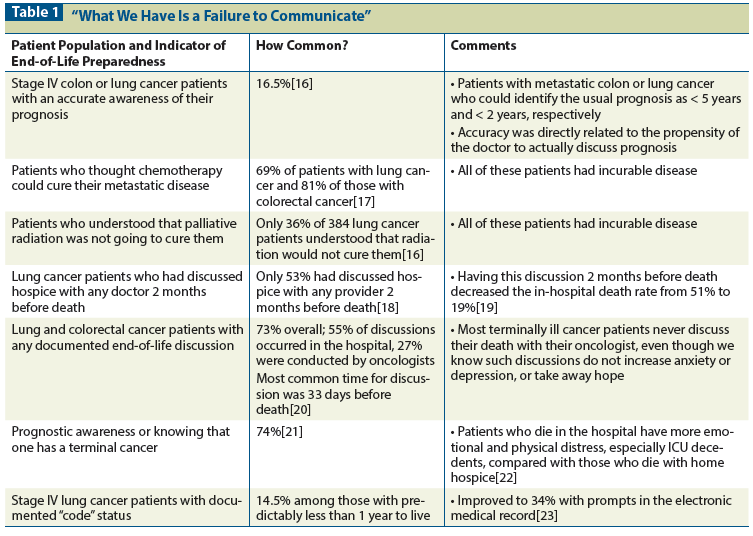
Table 2: Reasons Why Oncologists Don’t Discuss the Hard Stuff
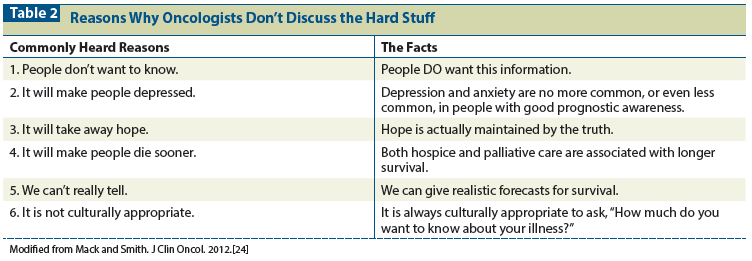
Table 3: Primary Palliative Care Skills Every Oncologist Should Have
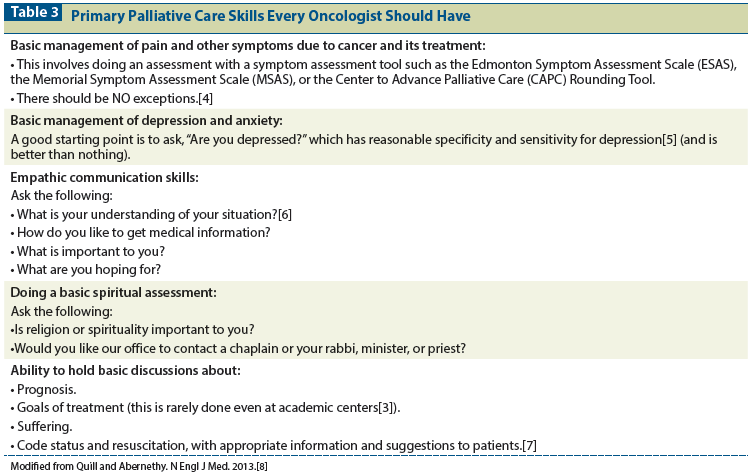
Table 4: Stratification Guide for Doctor-Patient Decision Making About CPR and Advance Care Planning
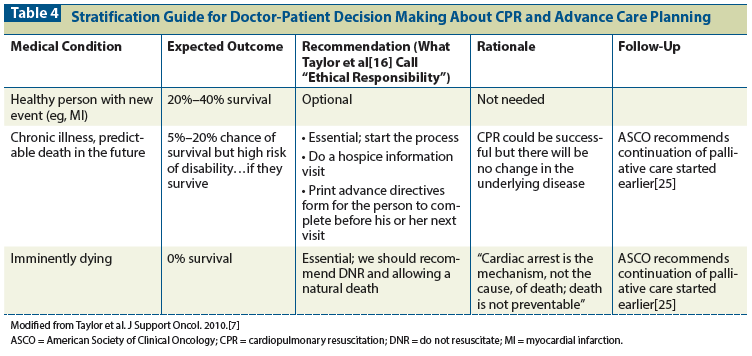
Figure: The Johns Hopkins “Palliative Care Temporary Tattoo”
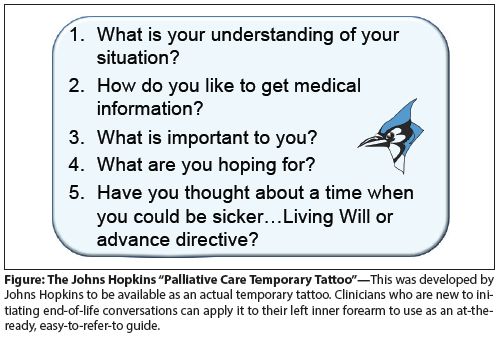
Recent data suggest that we are not successfully getting the message across about the importance of advance care planning for patients who have a life-ending illness. Half to three-quarters of patients with incurable cancer think that they might be cured by chemotherapy, radiation, or surgery. The source of this denial may lie with them, it may be traceable to their physicians, or it may be a combination of the two. This avoidance has consequences, since those patients with “prognostic awareness” have end-of-life care pathways that involve little use of the hospital, ICU, end-of-life chemo, or “codes” with almost no chance of success, and much more dying at home with hospice care. If we can successfully initiate advance care planning discussions with our patients and families, their end-of-life processes will improve, resulting in better care, less use of the hospital, and more honoring of newly discerned choices. We show how this can be done in regular oncology practice by introducing the Johns Hopkins “Palliative Care Temporary Tattoo” and by providing some ways to discuss cardiopulmonary resuscitation in settings where it will not be helpful.
“The single biggest problem in communication is the illusion that it has taken place.”
-George Bernard Shaw
Introduction
As oncologists, most of us take pride in being good communicators. However, just like with pain management, the effectiveness of our communication must be measured.[1] What our patients report, and what some of the subsequent outcomes may indicate, is that we have been mistaken in what we thought was communicated (Table 1). If understanding-and accepting-the disease process is important to good decision making, we have a ways to go in terms of providing our patients with all the information they need relative to their end-of-life (EOL) care.
Most national organizations that have examined the evidence regarding advance care planning have suggested that patients should have a discussion with their doctor about their EOL plans when it can reasonably be predicted that they have 1 year left to live. At least 50% of patients’ families experience regret about the EOL care their loved one received, and completion of any advance care planning is strongly associated with reduced caregiver distress.[2] Yet, the data suggest that advance care planning discussions, discussions of goals of care, and “code status” discussions are held rarely, and when they are held, it is often in the very last stages before death.[3]
So, if the evidence suggests we should be doing more effective advance care planning, with a better understanding of prognosis (“prognostic awareness”), how do we accomplish that?
First, dispel some of the myths that suggest advance care planning and code discussions are harmful.
There is not a single shred of evidence that, for the patient who wants to know-and most people these days do-providing information about advance care planning, code status, and prognosis is harmful. Some of the commonly heard reasons for not discussing these things-and facts that rebut them-are listed in Table 2.
Next, take advantage of some recent palliative care communication advances.
All oncologists should be versed in “primary palliative care”-the day-to-day care of and communication with seriously ill patients. A modified version of what constitute basic “primary palliative care” skills is displayed in Table 3.[4-8]
How Do We Start the Conversation?
At our institution, we have come up with a script that we are having made into what we are calling a “temporary tattoo” for advance care planning discussions. Such discussions can be very difficult both to start and to finish. It can help to have the lead-off gambit ready to go. This starts with, “What is your understanding of your situation?”[6] and then continues with the subsequent follow-up questions as appropriate (Figure).
These conversations are challenging; it would certainly be easier for the healthcare professional to conceal the truth than to have these discussions.[9] However, there is strong evidence that communication skills training for oncologists really does work: the patients who see a trained oncologist get more information and are less distressed, with no change in their satisfaction with their doctor.[10]
If we are not already having these discussions, how do we initiate them? First, recognize that they are wanted; many patients have advance medical directives (AMDs) but have not told anyone about them. In our study of 85 consecutive patients being admitted to the oncology ward, 40% had some form of advance directive. The oncologist had only noted it in the patient’s electronic medical record 5% of the time, and had only discussed the AMD with the patient 2% of the time.[11] At our institution, this is a significant source of friction between oncologists and the rest of the medical staff (eg, “Dr. Smith has been treating this person’s lung cancer for 3 years and never even brought it up. So, here I am at 3:00 AM in the ER having the discussion about intubation with this lung cancer patient who can’t even talk to me”).
Second, start by getting to know the person you are treating.[12] Don’t just jump in with a jarring question such as, “If you stopped breathing or your heart stopped beating, would you want us to bring you back to life?” (We overheard one resident say this at our hospital.) Instead, pull up a chair and ask, “What’s important to you? What are you hoping for? Have you thought about a time when you could get sicker?” Then move on to: “I am worried about you, and you are getting sicker. We should have this discussion now. Do you have a living will? Have you thought about what we should do if your body dies-that is, your heart stops or you stop breathing, because of the cancer?”
Third, do not be afraid to ask: “Would you like me to make a recommendation on what you should do if your body dies, your heart stops, or you stop breathing?” (Yes, you should use the word “dies.”) Don’t be afraid to make a recommendation; cardiopulmonary resuscitation (CPR) may be the only serious medical procedure for which we ask if it is acceptable, knowing that it likely won’t work! We recently found that older, more experienced doctors at various institutions learned to ask permission and make specific recommendations, whereas less experienced doctors were worried about taking away autonomy from the patient.[13] Moreover, a recent study showed that among surgery patients with lung or colorectal cancer, the false belief that palliative surgery could cure their cancer was only half as common in patients whose surgeon controlled the dissemination of information as it was in patients whose surgeon let the patient or family lead the conversation.[14]
Finally, in the same way that we clinicians need to have specialist knowledge about targeted agents, we should also have knowledge about the success of CPR in various patient groups (Table 4). The conversation about resuscitation can vary considerably, depending on the data for the particular scenario involved. Taylor et al[7] did an expert review of the evidence of CPR success, which is highly applicable to these discussions. Still, this is a situation in which it can be very helpful to have a standardized script. Just as most oncologists would never try to make up a new explanation of why adjuvant FOLFOX is being recommended for each patient in whom it is needed, and instead have a script that they follow, so too in this situation it is useful to have something such as the following ready: “Unfortunately, we have reached the point where we cannot treat your underlying disease, and it will soon cause your death. When that happens, your heart will stop beating. Therefore, I would recommend that, when your heart stops, we focus on assuring that you die peacefully and comfortably, rather than using shocks and machines to try to restart your heart. Does that make sense to you?”
For patients who disagree, and some will, it is important to explore why, in order to better guide their care based on their values and desires. The simple words “tell me more” may be all it takes to continue the conversation. We have also found that it is important to state, “You have not left any medical stones unturned, and you have been a great advocate for yourself (or your loved one).”
This approach works well for the imminently dying-patients who predictably won’t survive a “code” but have someone in the family who wants to prolong their life. Explaining that the chance of success is essentially zero, and that CPR won’t fix the cancer, can be hard but effective (see Table 4).
Take-Home Points
If we want to honor our patients’ wishes about the type of care they want to receive, we have to first discern those wishes. Unfortunately, care is becoming more intense during the last month of life, with increased use of the hospital and ICU, and short hospice stays-all indicators of both poor quality of care and missed opportunities for discussions of EOL goals and plans.[15] All the available evidence says that asking patients about their EOL preferences early in the disease trajectory, and making sure that palliative care skills are brought to bear, will improve their care.
Financial Disclosure:The authors have no significant financial interest in or other relationship with the manufacturer of any product or provider of any service mentioned in this article.
References:
1. Breuer B, Chang VT, Von Roenn JH, et al. How well do medical oncologists manage chronic cancer pain? A national survey. Oncologist. 2015;20:202-9.
2. Garrido MM, Prigerson HG. The end-of-life experience: modifiable predictors of caregivers’ bereavement adjustment. Cancer. 2014;120:918-25.
3. Dy SM, Asch SM, Lorenz KA, et al. Quality of end-of-life care for patients with advanced cancer in an academic medical center. J Palliat Med. 2011;14:451-7.
4. Browner IS, Smith TJ. Symptom assessment in elderly cancer patients receiving palliative care. Ann Oncol. 2013;24(suppl 7):vii25-vii29.
5. Chochinov HM, Wilson KG, Enns M, Lander S. “Are you depressed?” Screening for depression in the terminally ill. Am J Psychiatry. 1997;154:674-6.
6. Morris DA, Johnson KS, Ammarell N, et al. What is your understanding of your illness? A communication tool to explore patients’ perspectives of living with advanced illness. J Gen Intern Med. 2012;27:1460-6.
7. Taylor RM, Gustin JL, Wells-DiGregorio SM. Improving do-not-resuscitate discussions: a framework for physicians. J Support Oncol. 2010;8:42-4.
8. Quill TE, Abernethy AP. Generalist plus specialist palliative care-creating a more sustainable model. N Engl J Med. 2013;368:1173-5.
9. Panagopoulou E, Mintziori G, Montgomery A, et al. Concealment of information in clinical practice: Is lying less stressful than telling the truth? J Clin Oncol. 2008;26:1175-7.
10. Fujimori M, Shirai Y, Asai M, et al. Effect of communication skills training program for oncologists based on patient preferences for communication when receiving bad news: a randomized controlled trial. J Clin Oncol. 2014;32:2166-72.
11. Dow LA, Matsuyama RK, Ramakrishnan V, et al. Paradoxes in advance care planning: the complex relationship of oncology patients, their physicians, and advance medical directives. J Clin Oncol. 2010;28:299-304.
12. Roter DL, Larson S, Fischer GS, et al. Experts practice what they preach: a descriptive study of best and normative practices in end-of-life discussions. Arch Intern Med. 2000;160:3477-85.
13. Dzeng E, Colaianni A, Roland M, et al. Influence of institutional culture and policies on do-not-resuscitate decision making at the end of life. JAMA Intern Med. 2015 Apr 6. [Epub ahead of print]
14. Kim Y, Winner M, Page A, et al. Patient perceptions regarding the likelihood of cure after surgical resection of lung and colorectal cancer. Cancer. 2015 Jun 19. [Epub ahead of print]
15. Teno JM, Gozalo PL, Bynum JP, et al. Change in end-of-life care for Medicare beneficiaries: site of death, place of care, and health care transitions in 2000, 2005, and 2009. JAMA. 2013;309:470-7.
16. Liu PH, Landrum MB, Weeks JC, et al. Physicians’ propensity to discuss prognosis is associated with patients’ awareness of prognosis for metastatic cancers. J Palliat Med. 2014;17:673-82.
17. Weeks JC, Catalano PJ, Cronin A, et al. Patients’ expectations about effects of chemotherapy for advanced cancer. N Engl J Med. 2012;367:1616-25.
18. Huskamp HA, Keating NL, Malin JL, et al. Discussions with physicians about hospice among patients with metastatic lung cancer. Arch Intern Med. 2009;169:954-62.
19. Kumar P, Temel JS. End-of-life care discussions in patients with advanced cancer. J Clin Oncol. 2013;31:3315-9.
20. Mack JW, Cronin A, Taback N, et al. End-of-life care discussions among patients with advanced cancer: a cohort study. Ann Intern Med. 2012;156:204-10.
21. Mack JW, Weeks JC, Wright AA, et al. End-of-life discussions, goal attainment, and distress at the end of life: predictors and outcomes of receipt of care consistent with preferences. J Clin Oncol. 2010;28:1203-8.
22. Wright AA, Keating NL, Balboni TA, et al. Place of death: correlations with quality of life of patients with cancer and predictors of bereaved caregivers’ mental health. J Clin Oncol. 2010;28:4457-64.
23. Temel JS, Greer JA, Gallagher ER, et al. Electronic prompt to improve outpatient code status documentation for patients with advanced lung cancer. J Clin Oncol. 2013;31:710-5.
24. Mack JW, Smith TJ. Reasons why physicians do not have discussions about poor prognosis, why it matters, and what can be improved. J Clin Oncol. 2012;30:2715-7.
25. Schnipper LE, Smith TJ, Raghavan D, et al. American Society of Clinical Oncology identifies five key opportunities to improve care and reduce costs: the top five list for oncology. J Clin Oncol. 2012;30:1715-24.